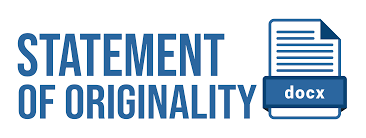Factors affecting amplang production in Samarinda City, East Kalimantan Province
DOI:
https://doi.org/10.30872/jipt.v3i2.741Keywords:
cracker, fish product, snack, localAbstract
This study uses several factors of production, namely capital, labor (HOK), and raw materials. The aims of this study were: (1) to determine the influence of production factors such as capital, labor (HOK) and raw materials; and (2) to find out what problems or obstacles are experienced during running a business. This research was conducted in Samarinda City, East Kalimantan Province. Primary data is obtained by observing and recording (observation) directly at the research location/object to be studied, as well as using direct interview techniques with respondents, namely business owners/employees. The sampling method for this research was carried out using a purposive sampling method, the samples selected based on these criteria were 30 businessmen processing amplangs/respondents. Methods of data analysis in this study used: (1) multiple linear regression analysis; (2) statistical test; (3) classic assumption test; and (4) descriptive analysis using computerized calculation tools such as Microsoft Excel Software and SPSS (Statistical Product And Service Solutions). The results showed that: Simultaneously (together), the capital input variable (X1), labor input (HOK) (X2) and raw material input (X3) had a significant effect on the amplang production variable (Yi), while partially, only labor input (HOK) (X2) and raw material input (X3) had a significant effect on the amplang production variable (Yi). The problems experienced by amplang processors were a decline in sales during the Covid-19 pandemic and a lack of availability of fish raw materials.
References
Badan Pusat Statistik Kota Samarinda. 2022. Kota Samarinda Dalam Angka 2022. Samarinda. https://samarindakota.bps.go.id/publication/download.html (Diakses pada tanggal 27 Januari 2022)
Balai Pelatihan Dan Penyuluhan Perikanan Bitung. 2018. “Ikan Bandeng” Membuat Pengolah Samarinda Takjub. https://kkp.go.id/brsdm/bp3bitung/artikel/5939-ikan-bandeng-membuat-pengolah-samarinda-takjub. (Diakses pada tanggal 20 November 2020).
Ghozali, Imam. 2016. Aplikasi Analisis Multivariete dengan Program IBM SPSS 23. Badan Penerbit Universitas Diponegoro. Semarang.
Haqiqiansyah, G., & Saleha, Q. (2020). Peran Media Sosial Sebagai Sarana Promosi Pada Pemasaran Hasil Pengolahan Amplang Di Kecamatan Sanga Sanga Kabupaten Kutai Kartanegara. Jurnal Pembangunan Perikanan dan Agribisnis, 7(1), 1-11.
Maliha, A. (2018). Pengaruh Modal, Tenaga Kerja, Dan Bahan Baku Terhadap Tingkat Pendapatan Industri Kue Dalam Perspektif Ekonomi Islam (Studi Kasus Di Home Industri Mitra Cake Legundi Sukarame Bandar Lampung) (Doctoral dissertation, Uin Raden Intan Lampung).
Pradana, A. D. (2013). Analisis Faktor-faktor yang Mempengaruhi Efisiensi Industri Rumah Tangga Keripik Tempe di Kabupaten Blora. Economics Development Analysis Journal, 2(2).
Siyoto, S. dan M.A. Sodik. 2015. Dasar Metodologi Penelitian. Literasi Media Publishing. Yogyakarta. 130 hal.
Soekartiwi, 1986. Ilmu Usahatani dan Penelitian Untuk Pengembangan Petani Kecil. UI Press, Jakarta.
Sugiyono. 2012. Metode Penelitian Pendekatan Kualitatif,Kuantitatif dan R&D. Penerbit Alfabet. Bandung.
Sugiyono. 2014. Metode Penelitian Pendidikan Pendekatan Kualitatif,Kuantitatif dan R&D. Penerbit Alfabet. Bandung.
Sugiyono. 2017. Metode Penelitian Kuantitatif, Kualitatif dan R&D. Bandung: Alfabeta.
Sugiyono. 2018. Metode Penelitian Kuantitatif Dan Kualitatif. CV. Alfabeta, Bandung
WHO (World Health Organization). 2020. Coronavirus. (diakses pada tanggal 13 Januari 2022). https://www.who.int/indonesia/news/novel-coronavirus/qa/qa-for-public
Downloads
Published
Issue
Section
License
Copyright (c) 2024 Nusantara Tropical Fisheries Science (Ilmu Perikanan Tropis Nusantara)

This work is licensed under a Creative Commons Attribution-NonCommercial-ShareAlike 4.0 International License.








